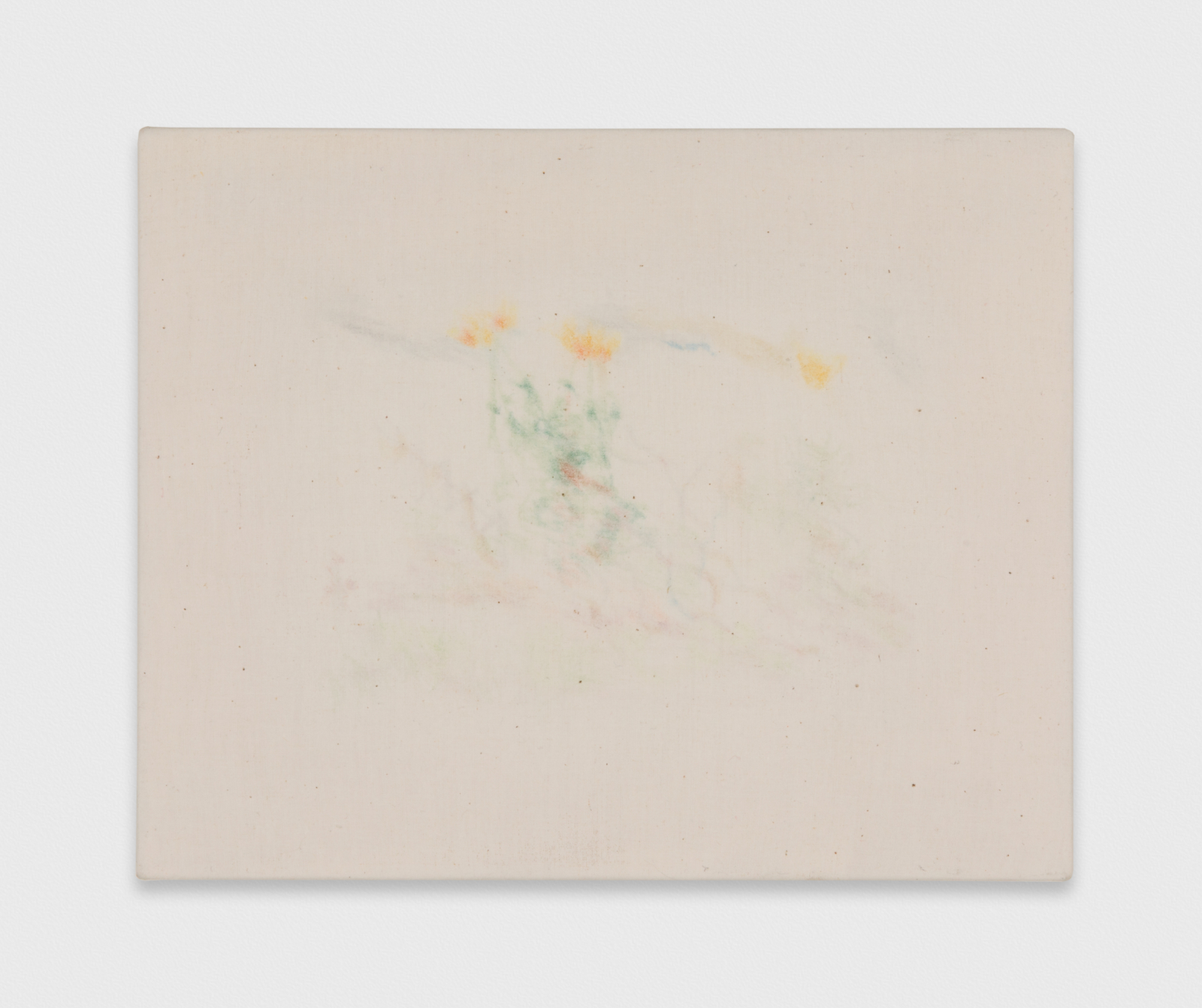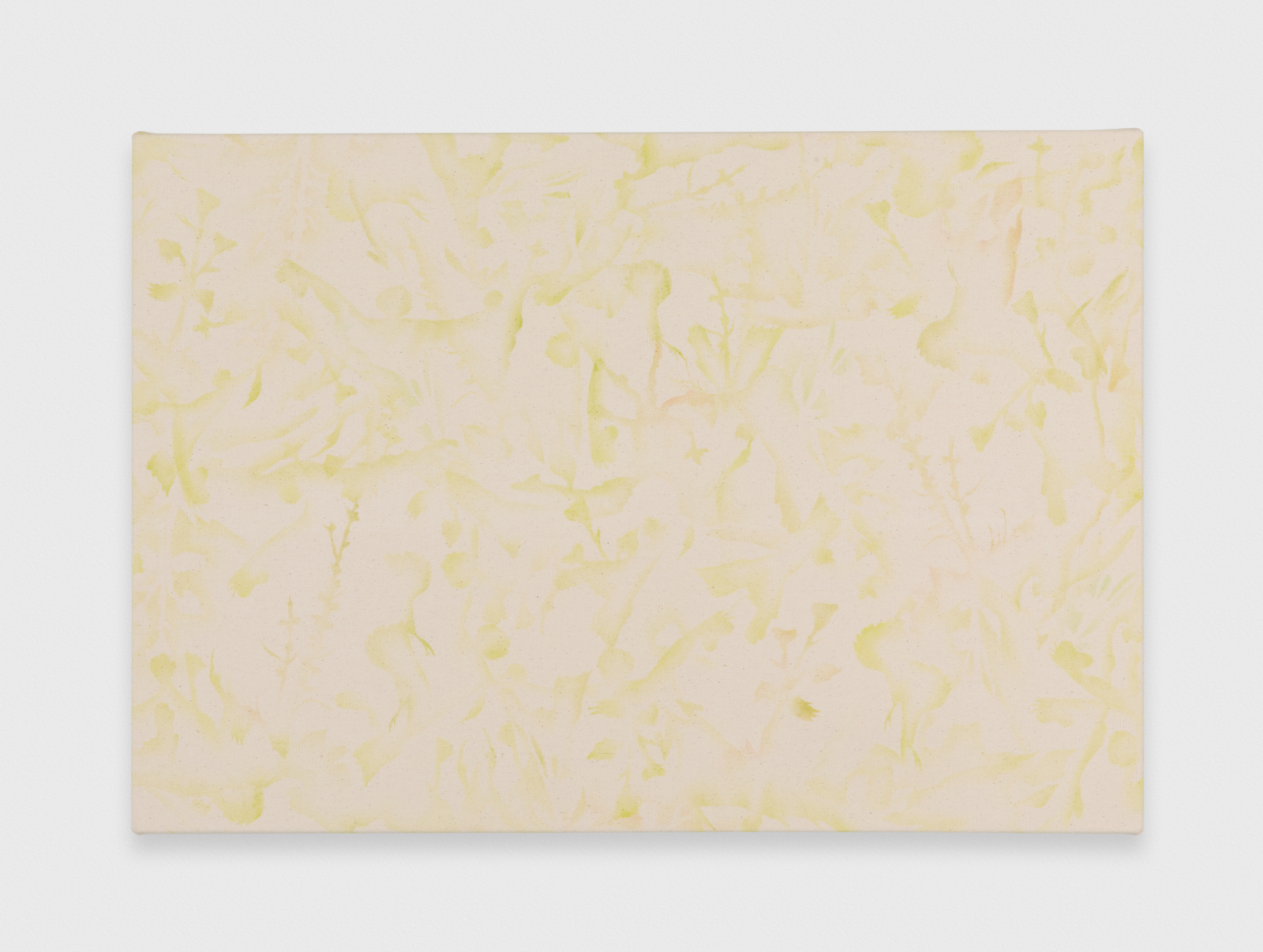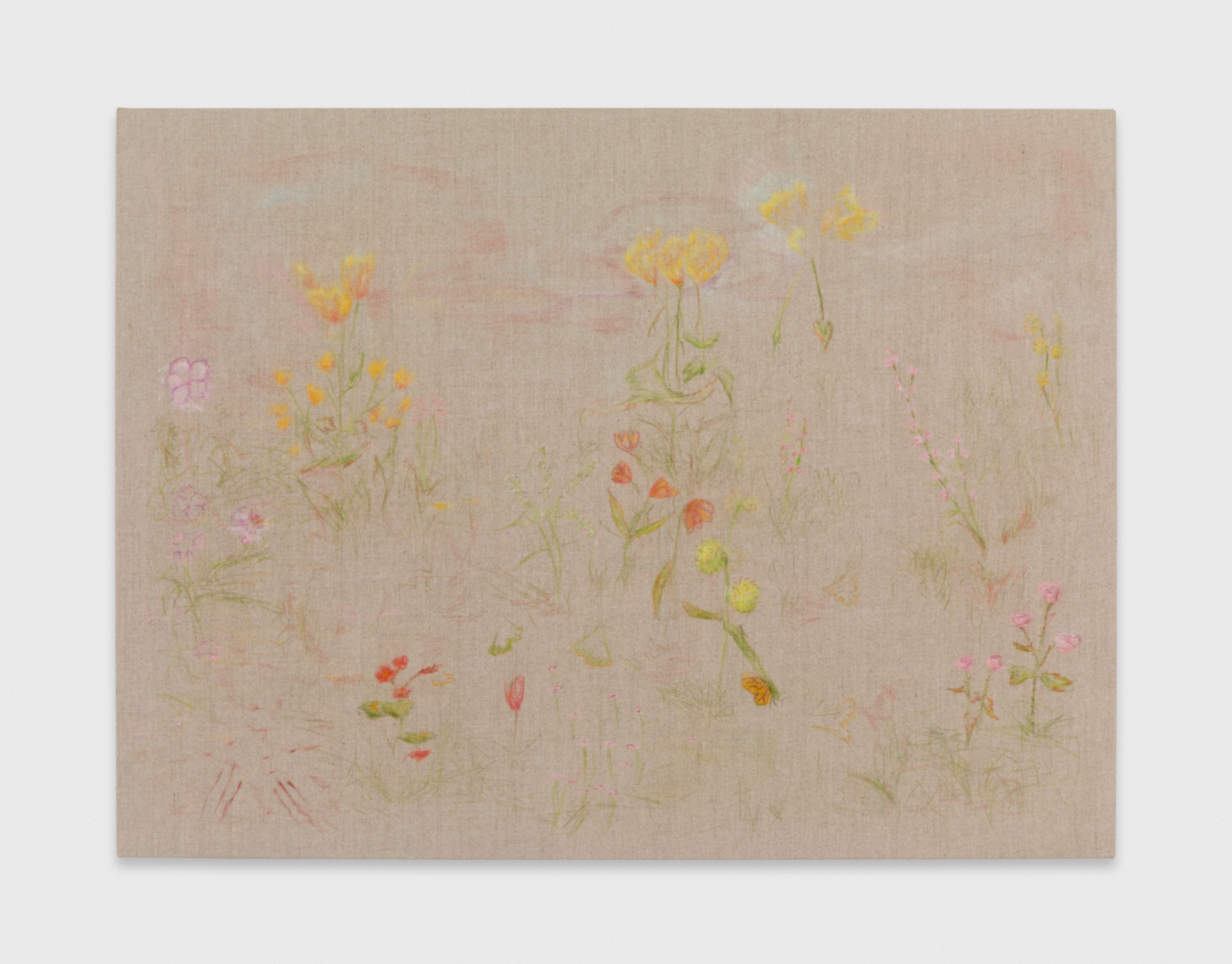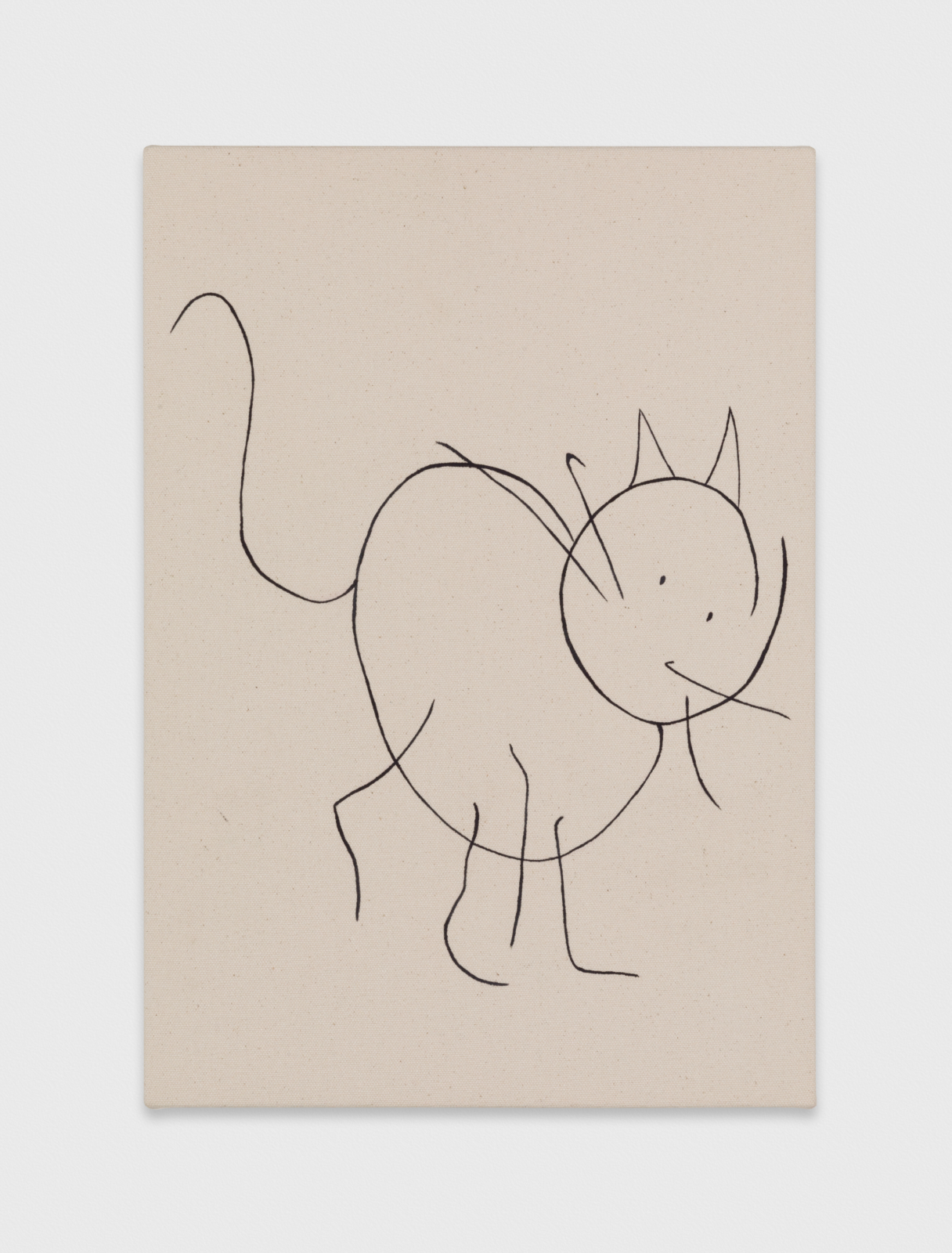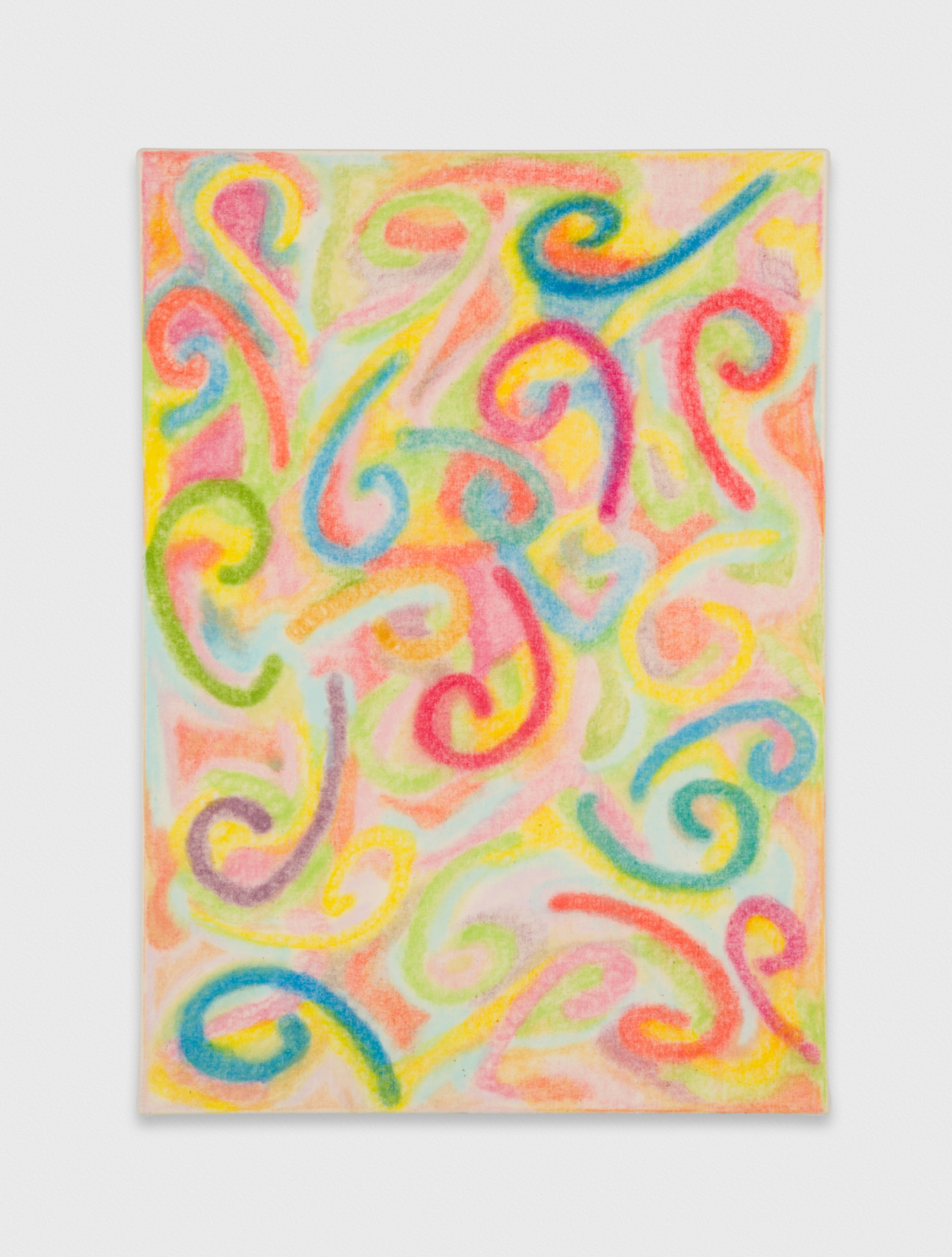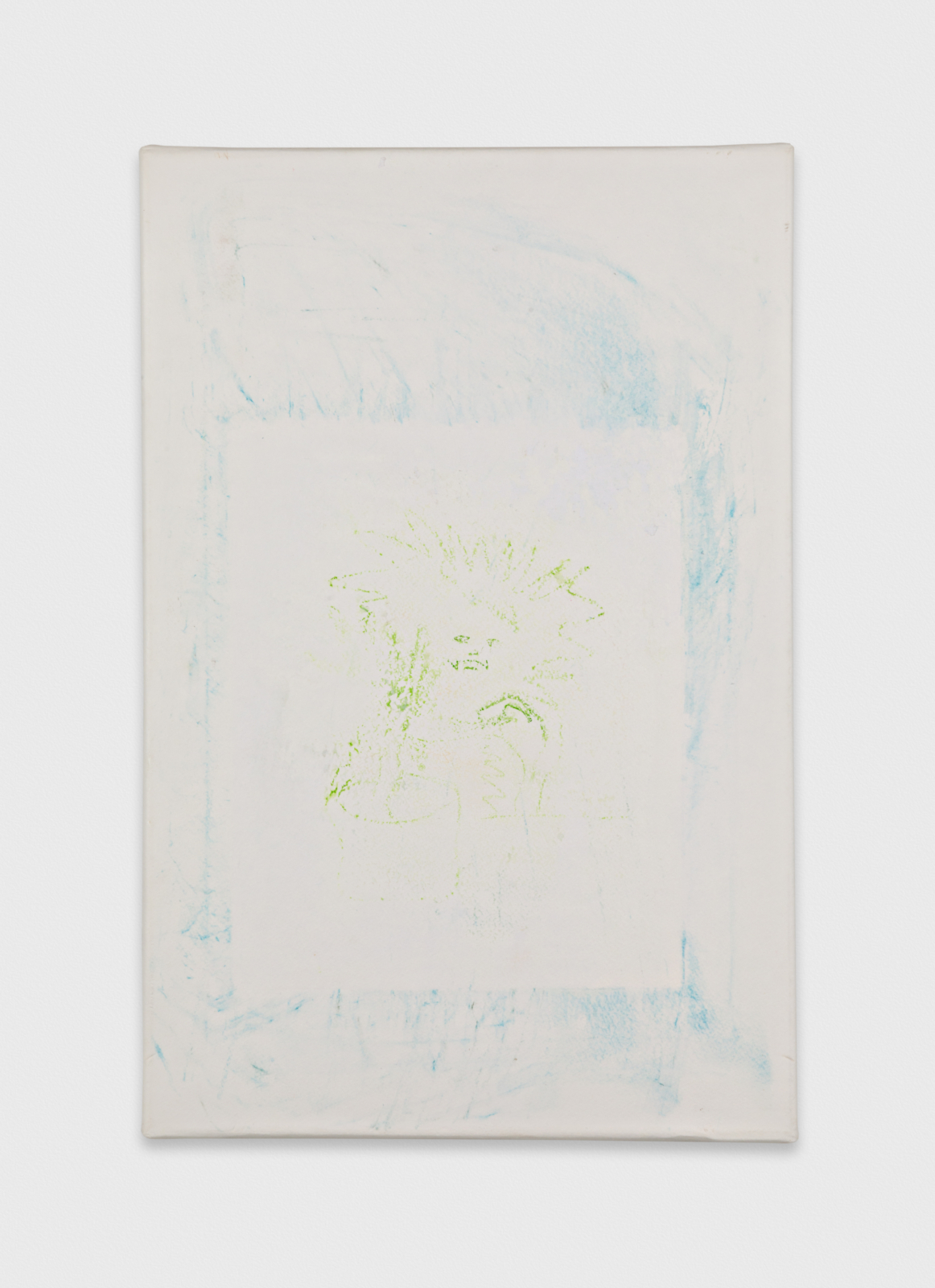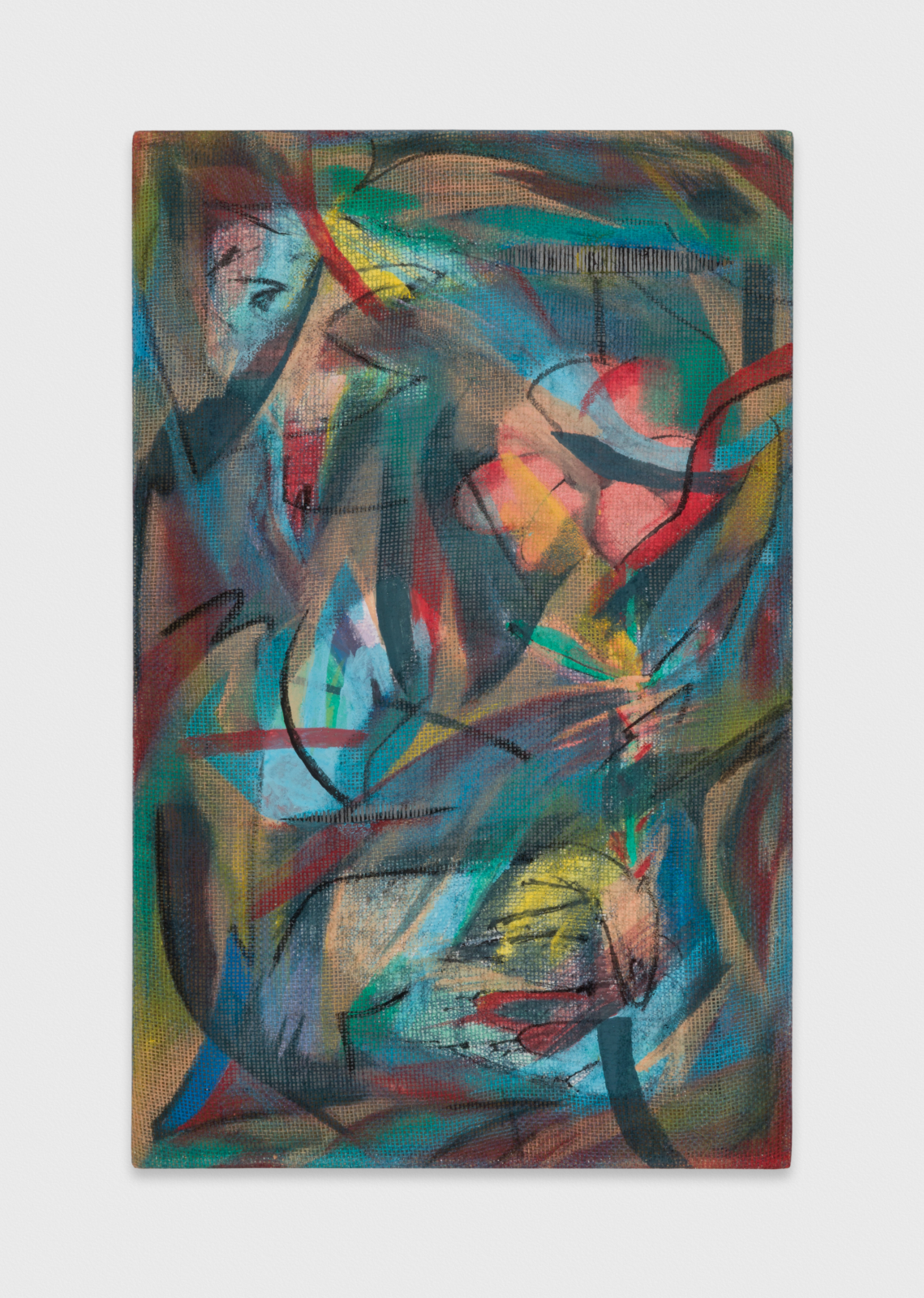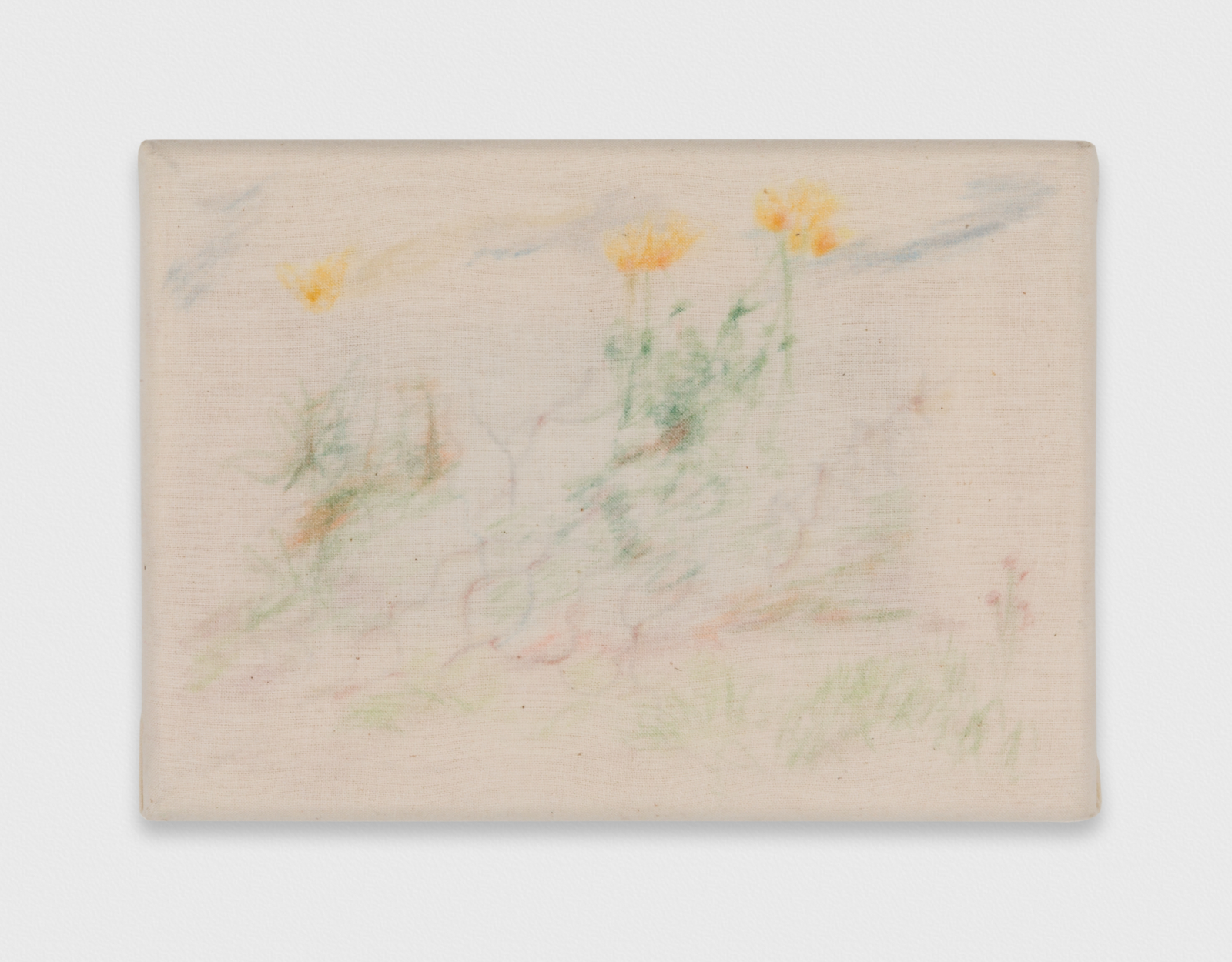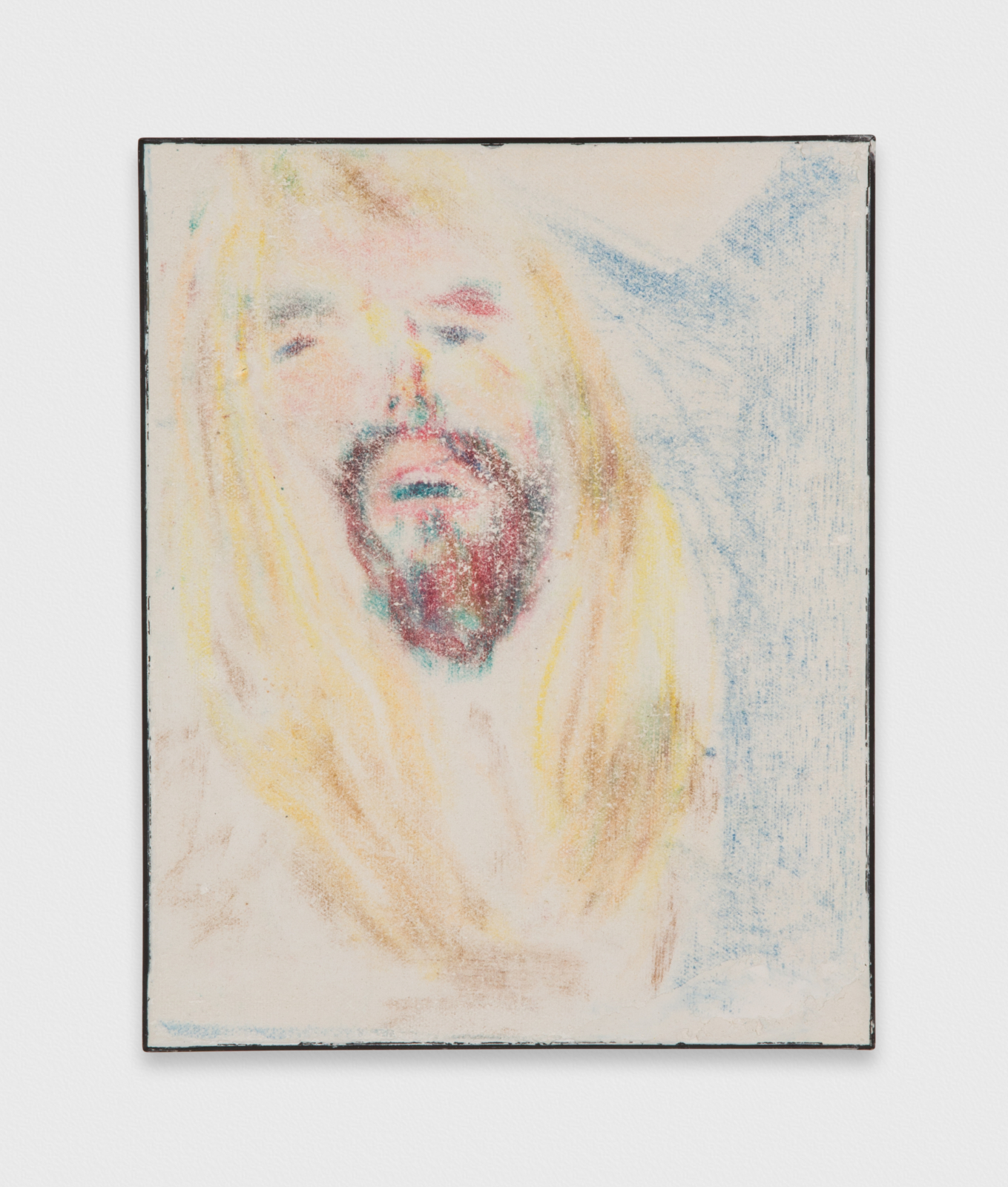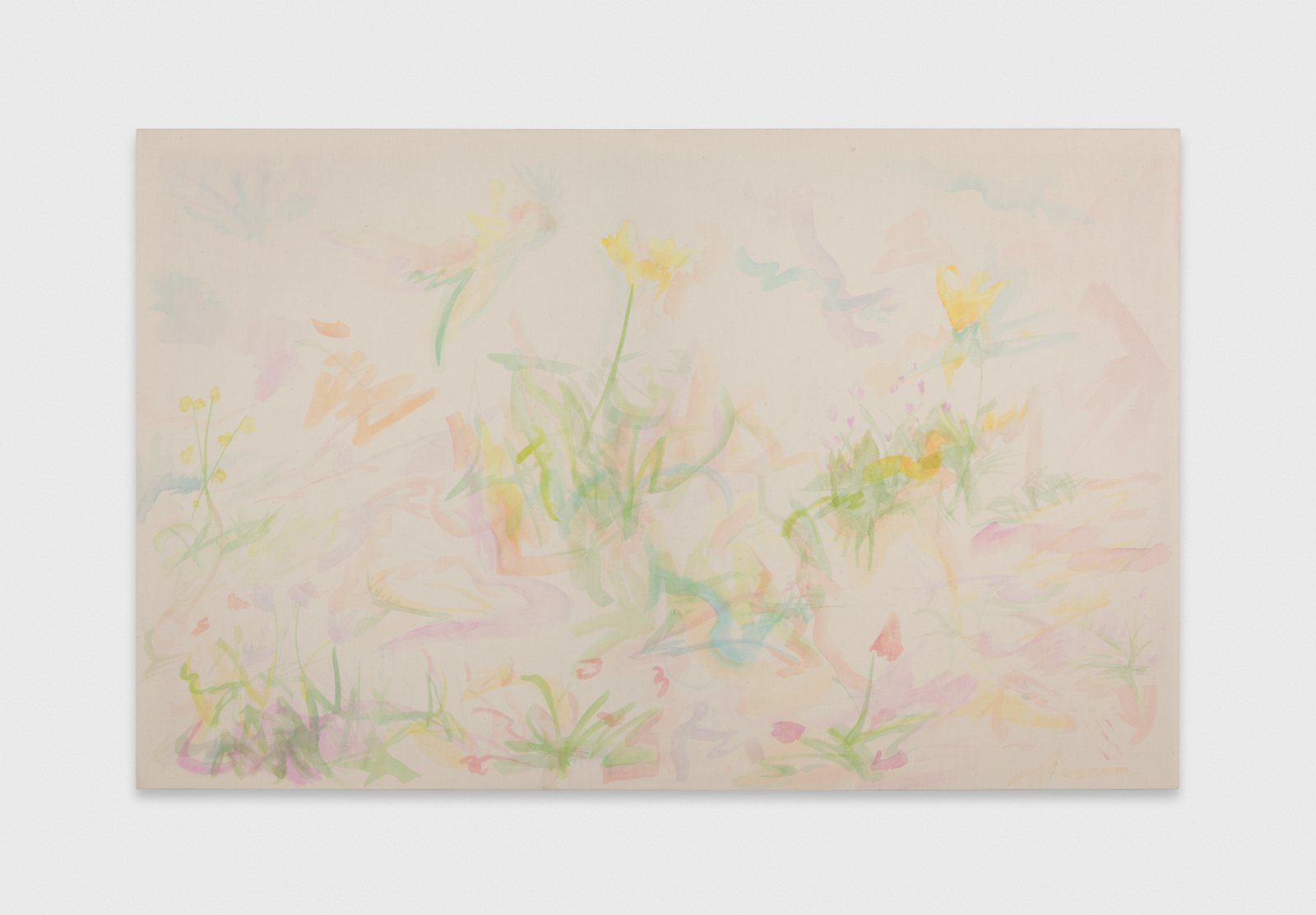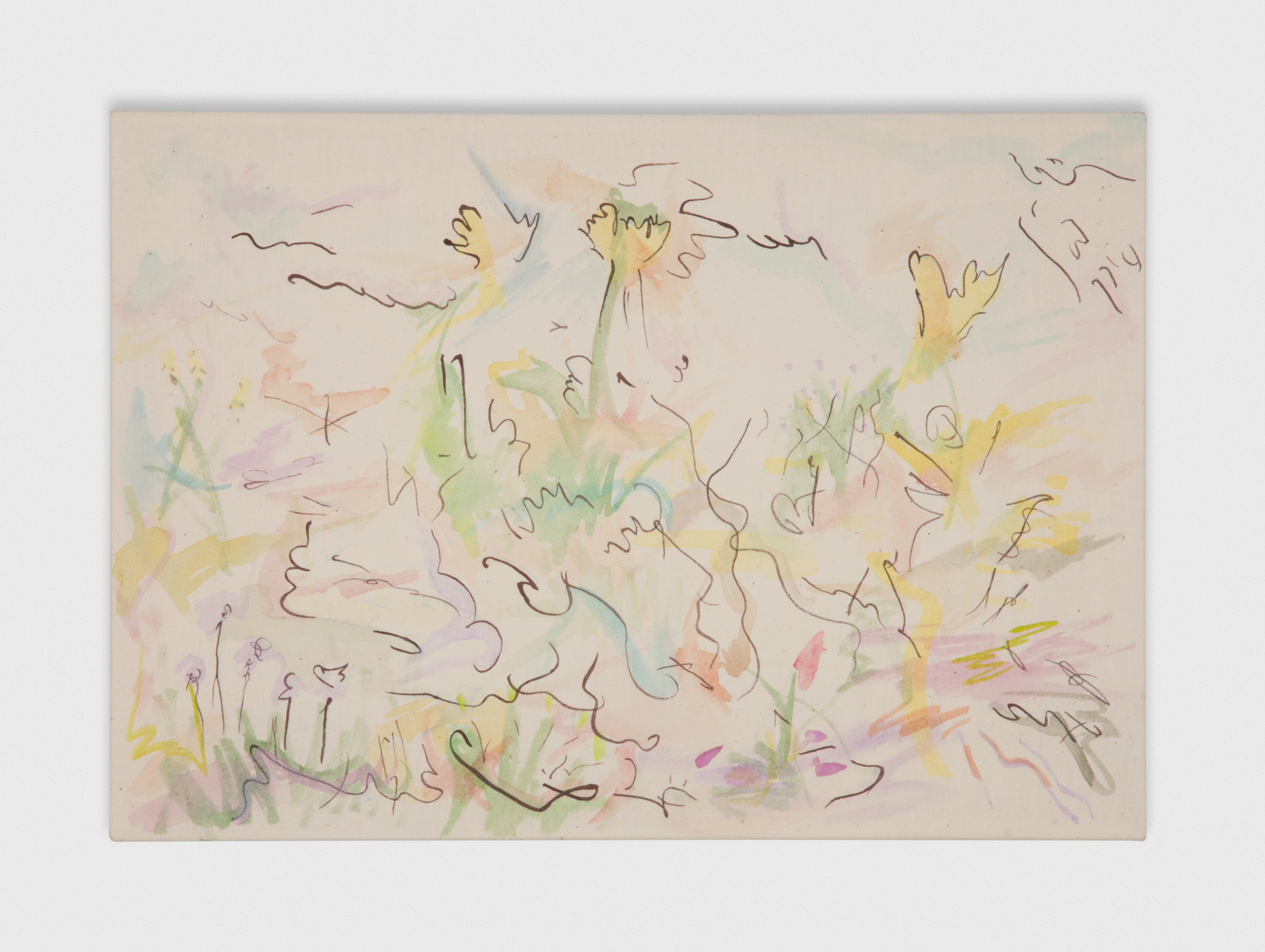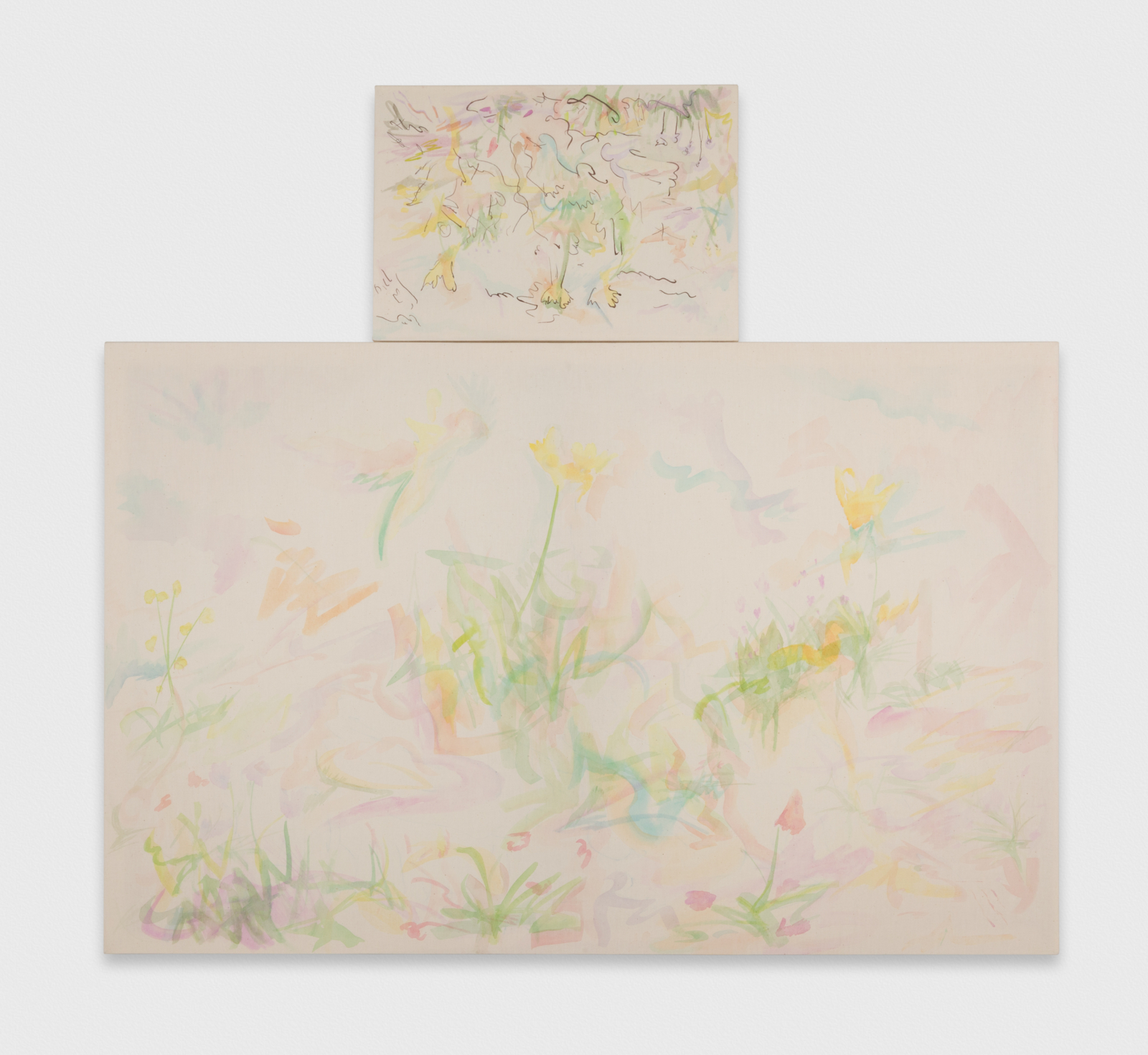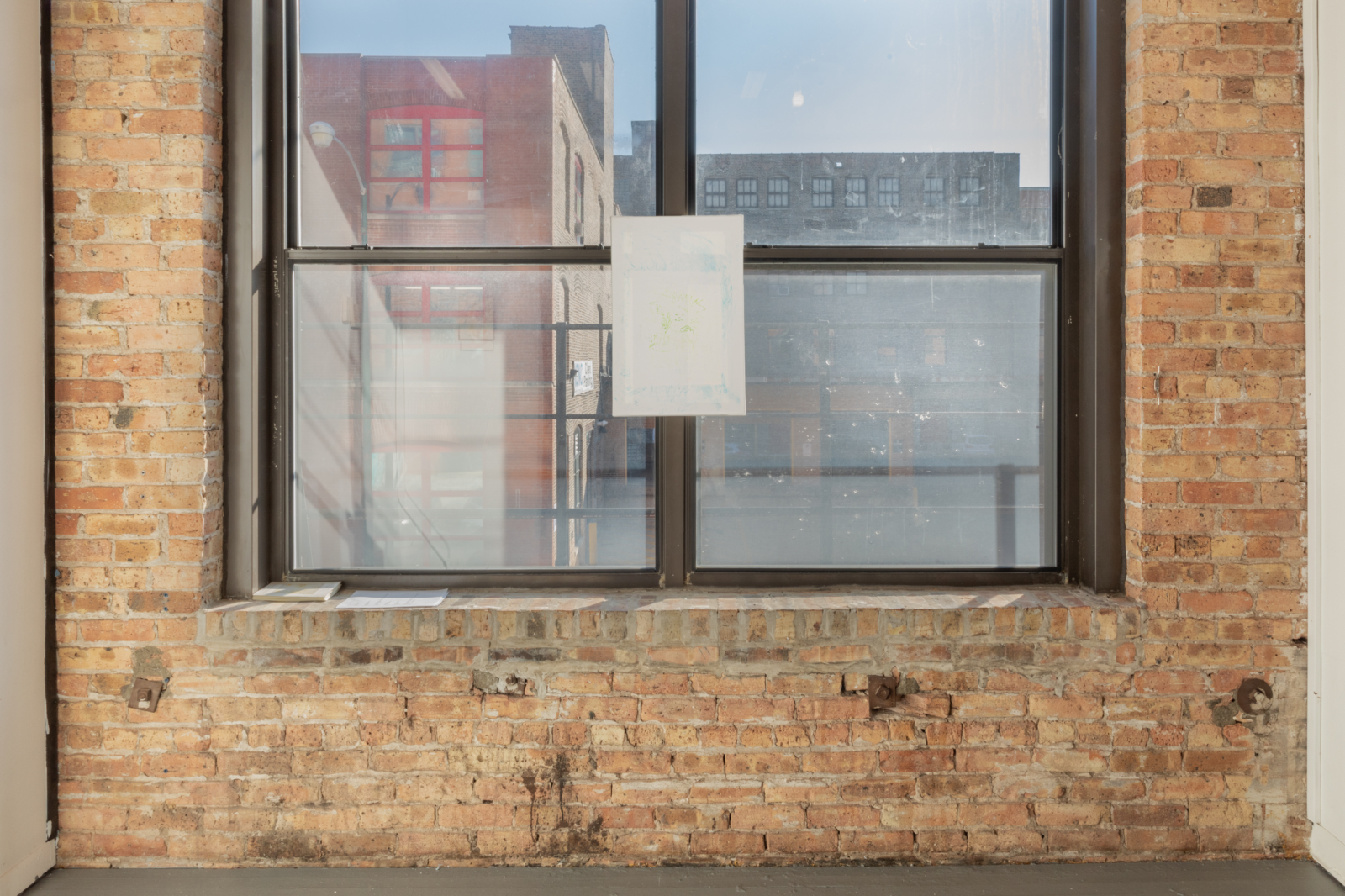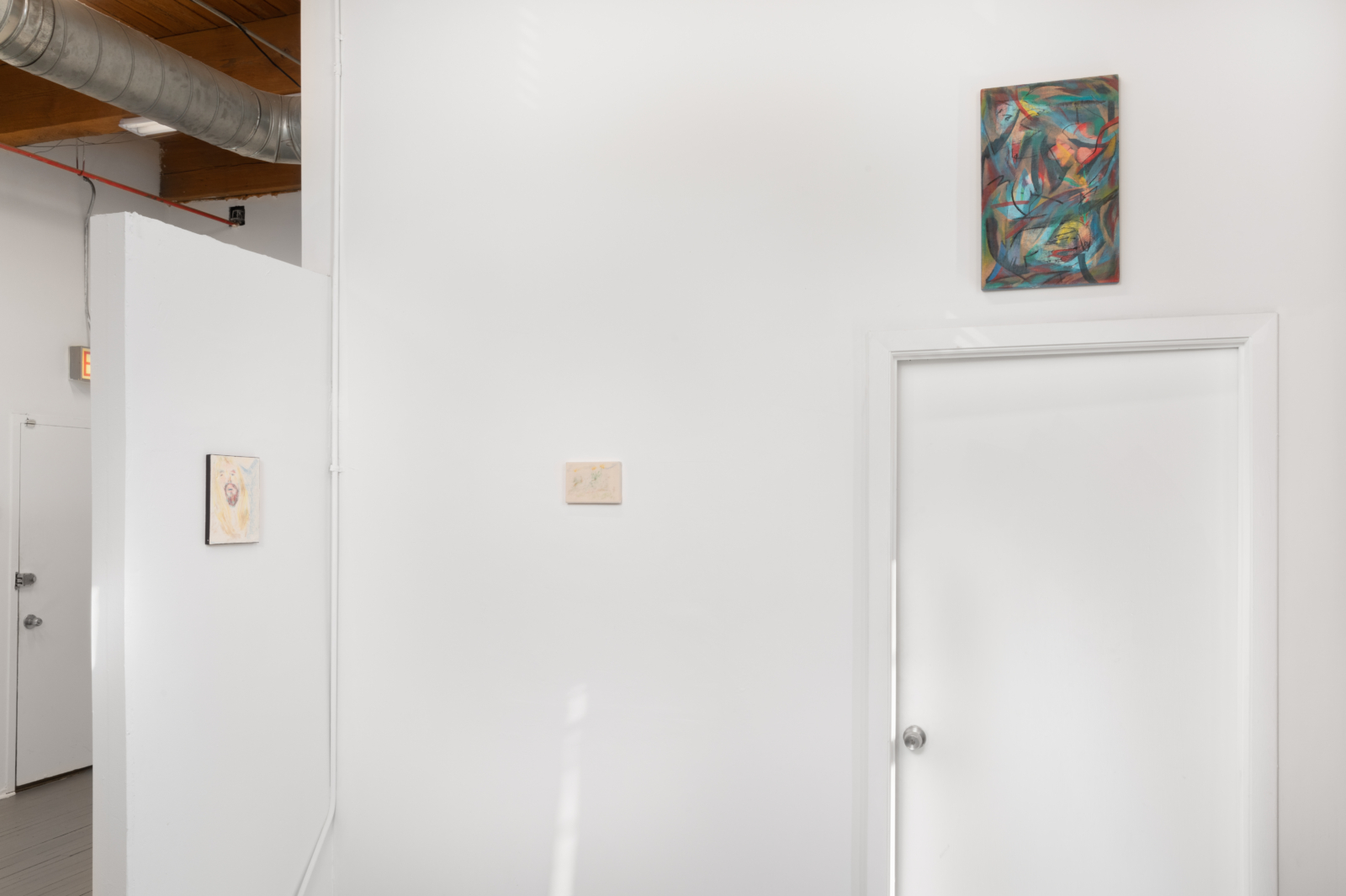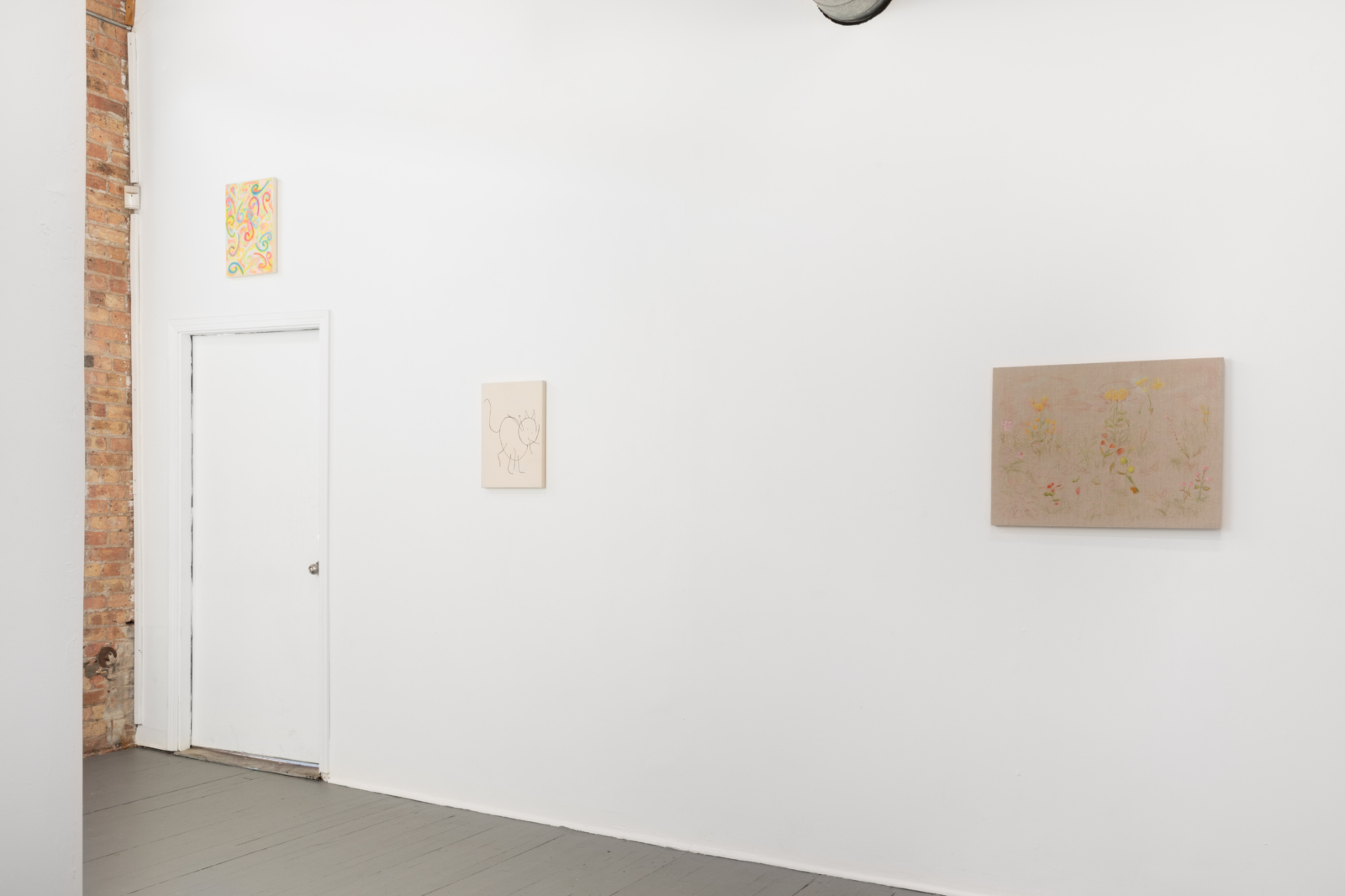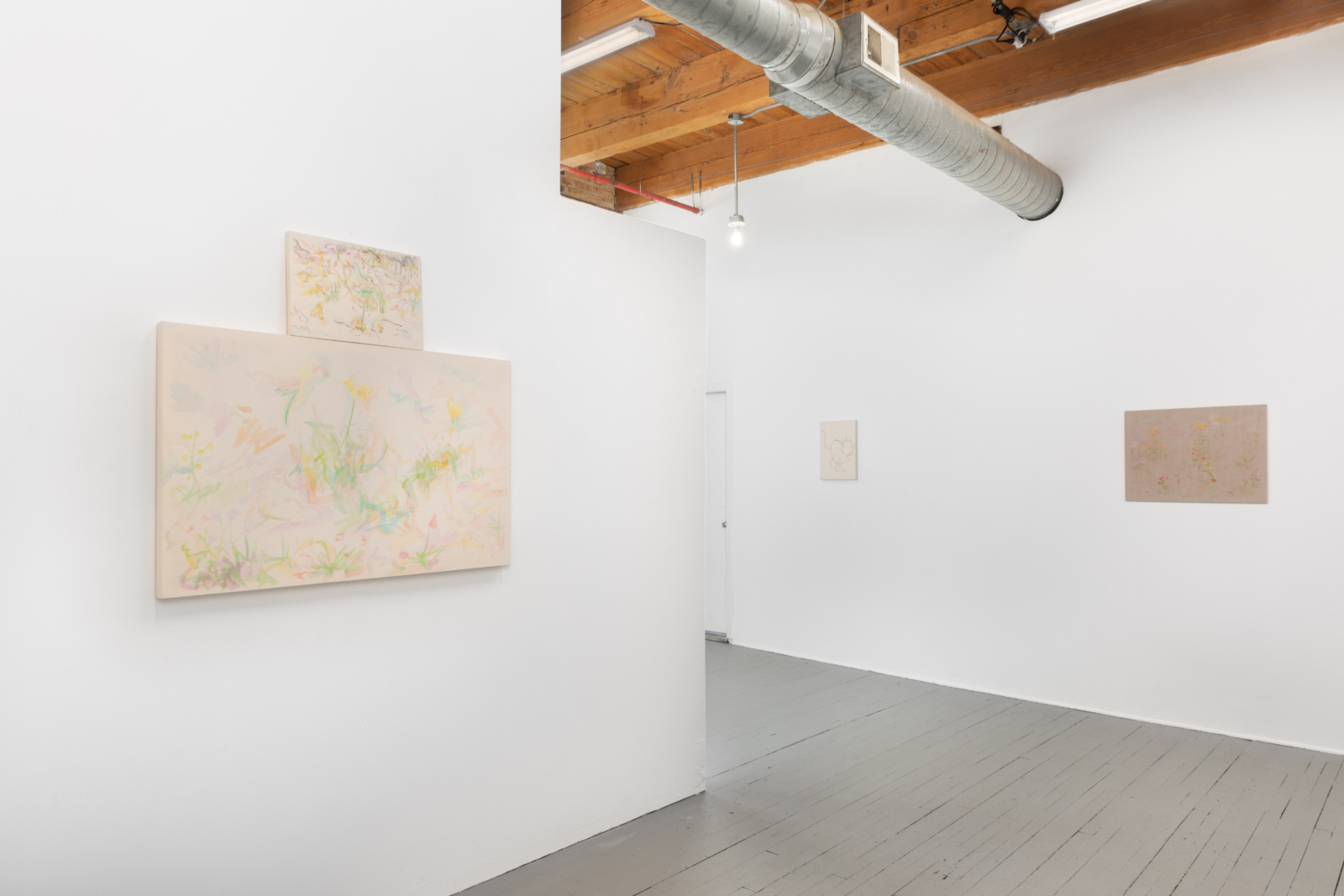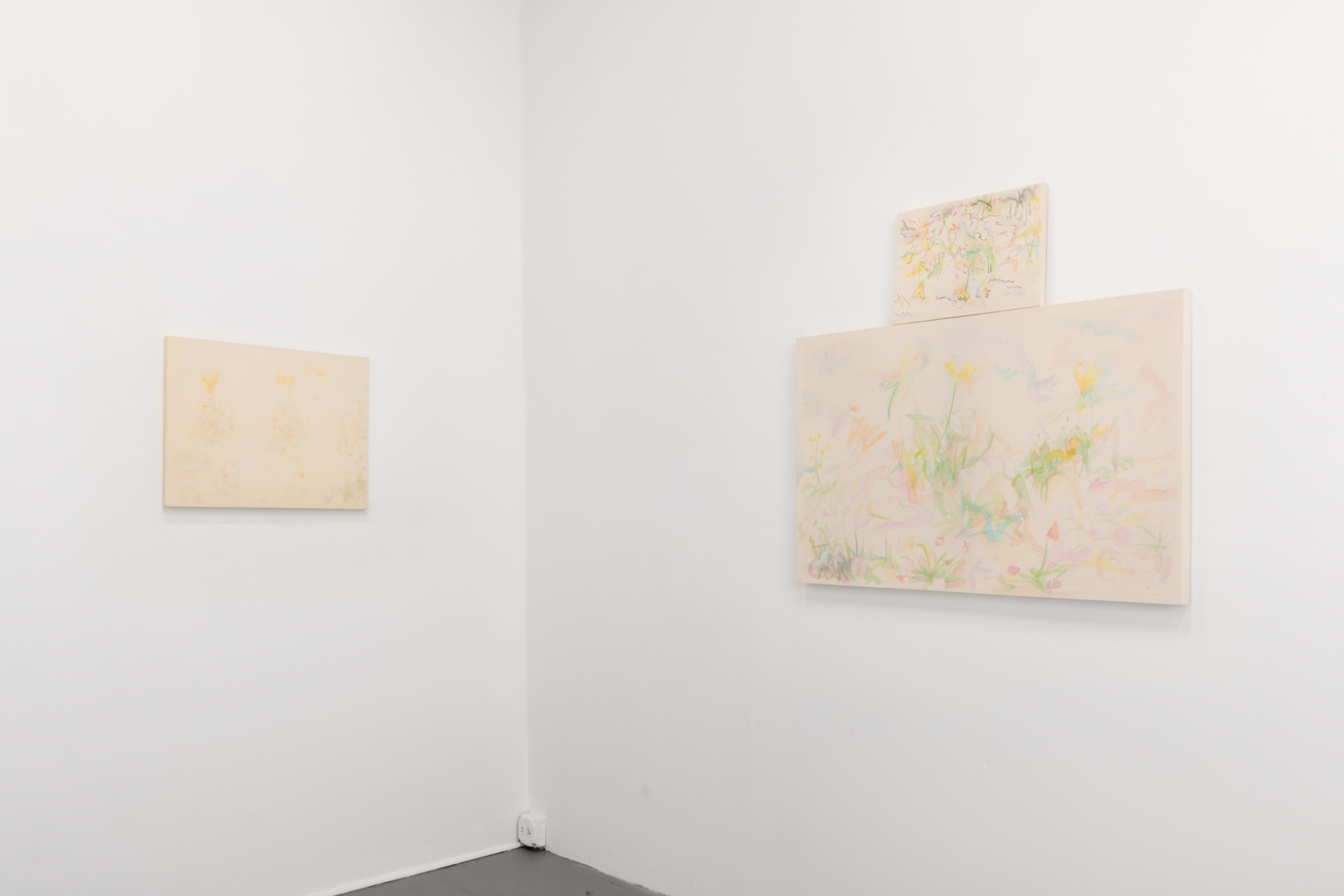Exhibition Text
Flor is a conceptual artist. Part of their conceptual framework —friendship?— involves florencio. florencio asked Flor to ask Angel Marcloid to use her sound skills —and conjure her Fire-Toolz personae— to elicit the sounds that exist within and emanate from the multi-temporal spaces that florencio navigates (florencio666.wav). In addition to the aural environment, traces of florencio’s previous iterations appear visually in several paintings. One such iteration, waz appears in a piece from 2014 —perhaps “waz” was what florencio once was at one point —becoming multiple.
While florencio cruises through their multiple temporalities, Flor goes on a walk —a dérive. While cruising through their neighborhood on this leisurely walk, Flor encounters the same flowers previously sent to them by Ben (the B A R in BAR400) on a summer afternoon —an image of yellow flowers joyously growing tall overflowing a fence. In a new series of works, the memories of this image conglomerate with the memories of that encounter and other walks—dérives— around that same neighborhood, of walking to the flower shop encountering the plant only their aunts had in Mexico (possibly from the milkweed family), the paw scratch marks on the mud, and walking while thinking of proximities, longings, gentle gestures… of propositions of language that are yet to come, giving these gestures space…making space for these propositions to explore their potentialities. Within these new works, there is a horizontal shift, a way in and out of portraiture (for more than 3 years all of Flores’s compositions had been portrait oriented). In this gesturing toward landscape, all these memories extend into and embrace an enduring collectivity. And in this cruising with flowers, they aim to deconstruct their subjectivities of themselves, picking up the traces of propositions of a language that is yet to come, always already in the horizon —but perhaps, always already within, so let’s give this language space, make it endure, let it bloom…so come and join Flor, florencio, and Fire-Toolz on this cruisin’ through the traces of ephemeral jouissance that lay in the horizon’s potentiality.
Review by Gareth Kaye
Flor Flores “… for them to endure, give them space” at Bar4000
Review by Gareth Kaye @ Chicago Artist Writers
In the latest exhibition at Bar4000, … for them to endure, give them space, Flor Flores’ explorations of time, image, and embodiment continue through floral imagery and language. The artist also extends their interaction with Florencio—a conceptual persona—whose conversations and inquiries with Flores often open new ways through which the artist translates ideas and images through the filters of memory, gesture, and performance.
Flores first began their work with flowers three years ago, beginning with photographs they captured on walks around Chicago. They later noted that the exercise ultimately grew stale, leaving them with a sense of having violated something of a trust or respect shared between beings. Whereas Flores framed the flowers for their own work, the relationship between artist and subject felt too insular. Coincidentally, it was around this time that Flores began to receive messages from friends of the flowers they saw and began to incorporate these images (coming as a form of mediated communication themselves) instead. Using these second-hand photographs, ready-made translations in themselves, Flores could interpret them not only as a form of communication between intimates but also as a passive observer of a photograph.
The pastel image-transfer process that has since become a staple of Flores’ work builds out images and time by simultaneous acts of addition and subtraction. As Flores builds an image, they intuitively select to transfer parts of it to another surface and then continue to expand the initial image afterward. The inevitable unevenness in line, weight, and color leaves behind a series of vestiges and impressions within the process. The transfers soften images like, from a distance (2018), to become out of focus in some parts from repeated transfer, while a certain leaf, stem or edge becomes sharp, and pronounced. The haziness of not only memory, but visual apprehension as well, can be found manifest in the soft glow of the pastel, floating on top of the surface of the canvas like a gossamer.
Flores first used this process in experimenting with images of their friends, and for one of the first times in a recent exhibition, Flores has included one of these images, a longing—from a distance—giving space. nathan 6.22.15 (2015); an image, made in the past, presented now, amongst recent works that suggest where the work has been, is now, and a speculation of myriad routes for future explorations of intimacy. Paired with another painting, untitled (frame) – waz, (2014), the inkling of a figure creates an abstracted inquiry: Is this figure someone receding from memory and representation? Or someone coming into being, and only because of their placement and vibration are they out of focus and appear to be on the cusp of legibility? Is this what it means to recognize someone as an equal—as a friend? To care that someone is coming forward and always emerging when there is an option to choose between recession or affirmation?
Given that many of the painting’s titles imply an action or proposition for action e.g., let’s cruise— Florencio borrows from Flor and Flor learns from Florencio, but they forgot who was sleeping and who was speaking, (2018) – a title that ends with a comma, causing caesura to suggest the potential for more action—if not here than elsewhere, anywhere really. Furthermore, another canvas, Florencio’s first hand at cruisin’ (2018), is stacked on top, illustrating the action of the larger image title, all the while building the confusion of position, subject, and subjectivity in the making.
These images do not ask, but rather force a kind of communion between parties. An intimacy complicated by the inability to discern who is speaking, singing, making space, and looking once again recalls Nancy: “It is a real presence, because it is a contagious presence, participating and participated, communicating and communicated in the distinction of its intimacy.”
In a performance that accompanies the exhibition Florencio’s first hand at making room 00.06.66, (2018), accompanied by a musical track by Fire-Toolz and a perfume made by Matt Morris, Florencio occupies the gallery for six minutes and sixty-six seconds. Through participation and cohabitation between the artist, audience, and the deep diffused drone of speakers carried and moved through the gallery by Flores and gallery director Ben Regozin, space and position were put into focus. The audience found themselves sharing the elusive and diaphanous exchange of vision and position with the parties implicated in the paintings, and addressing an entity that emanated from multiple points in time, space, memory, and imagination.
The intimacy of Flores’s practice often betrays the great lengths of collaboration that are necessary to make much of their work. From the production of images that are sent to them, or communication with Florencio through multi-temporal spaces, and the relationship between each image and its individual beholder, reconsiders the triangulation of community. Flores pursues that sense in memories which are never explicit or visible, the unknowable glow of having been there all while being here. The multiplicity of the self into temporalities on the brink of one another, allowing each work in … for them to endure, give them space, fold time into the surface of the image, cloaking and highlighting the traces of familiarity Flores chooses to show in equal amounts. What is shared and what is withheld is a snickering exchange of secrets between unwitting and even unlikely friends.
Performance
florencio’s first hand at making room 00.06.66 (Aural Happening)
florencio666.wav by Fire-Toolz receiver, speakers, 2 bodies, florencio sketch updated 7.7.18 perfume by Matt Morris.
Duration ~6 minutes & 66 seconds, media variable
2019
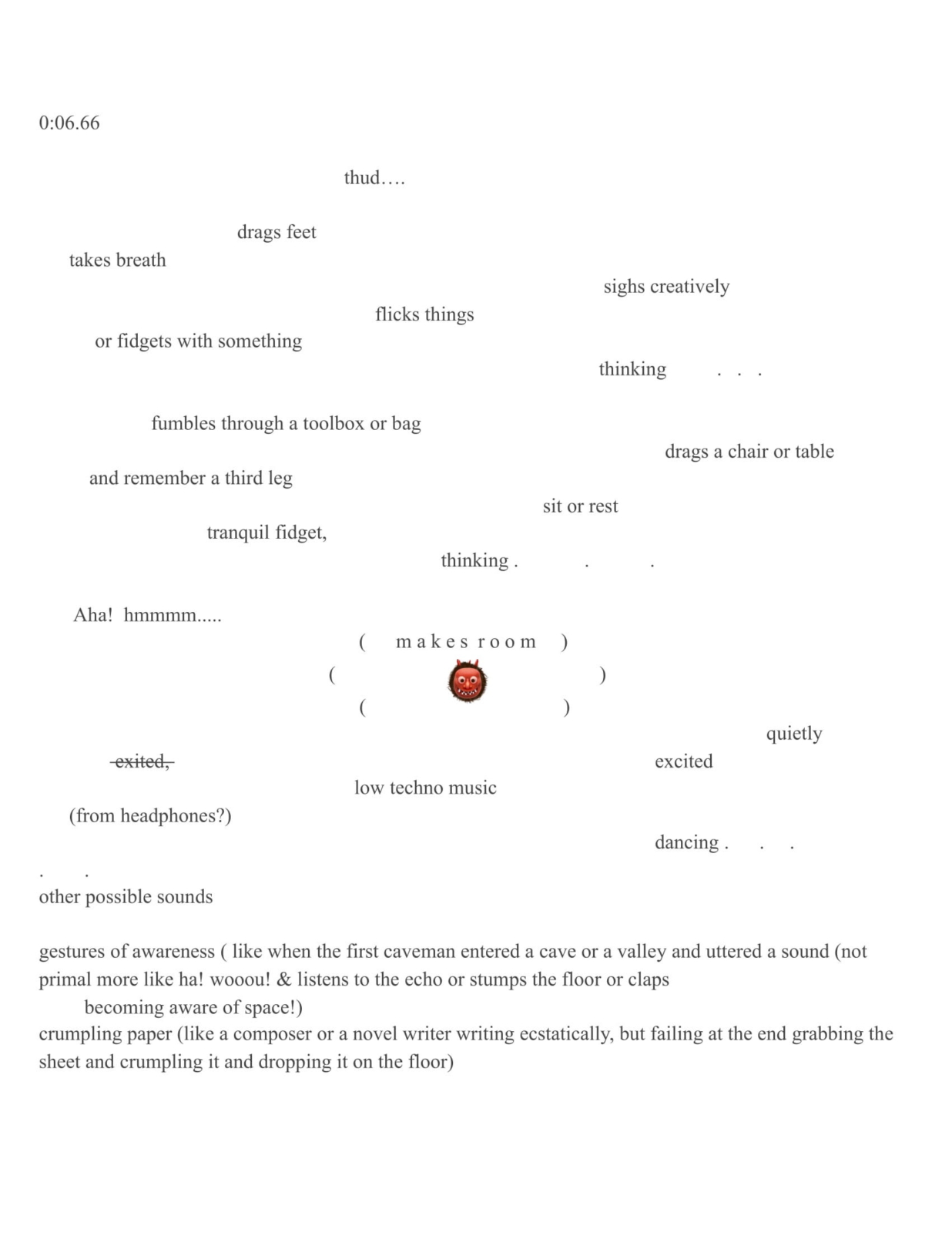
Series:
Price:
Available:
Location:
Tags:
Year:
Dimensions:
